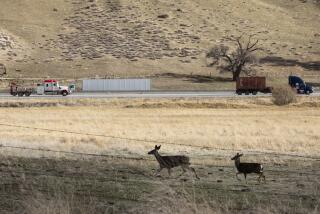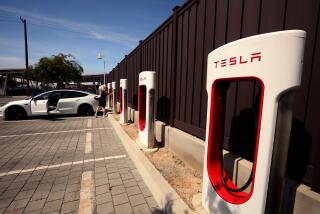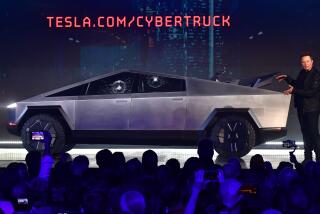Tesla’s enormous battery in Australia is responding to outages in record time
Less than a month after Tesla Inc. unveiled a new backup power system in South Australia, the world’s largest lithium-ion battery is already being put to the test.
It appears to be far exceeding expectations. In the last three weeks alone, the Hornsdale Power Reserve has smoothed out at least two major energy outages, responding even more quickly than the coal-fired backups that were supposed to provide emergency power.
Tesla’s battery last week kicked in just 0.14 seconds after one of Australia’s biggest plants, the Loy Yang facility in the neighboring state of Victoria, suffered a sudden, unexplained drop in output, according to the International Business Times. The week before that, another failure at Loy Yang prompted the Hornsdale battery to respond in as little as four seconds — or less, according to some estimates — beating other plants to the punch. State officials have called the response time “a record,” according to local media.
The effectiveness of Tesla’s battery is being closely watched in a region that is in the grips of an energy crisis. The price of electricity is soaring in Australia, particularly in the state of South Australia, where a 2016 outage led 1.7 million residents to lose power in a blackout. Storms and heat waves have caused additional outages, and many Australians are bracing for more with the onset of summer in the Southern Hemisphere.
The Hornsdale battery system, which uses the same energy-storage tech found in Tesla’s electric cars, is one of Tesla Chief Executive Elon Musk’s newest projects.
In March, Musk, who is known for setting high goals and only sometimes meeting them, vowed on Twitter to deliver a battery system for South Australia’s struggling grid within 100 days or it would be free. By early July, the state had signed a deal with California-based Tesla and the French-based energy company Neoen to produce the battery. And by Dec. 1, South Australia announced it had switched on the Hornsdale battery.
Fed by wind turbines at the nearby Hornsdale wind farm, the battery stores excess energy that is produced when the demand for electricity isn’t peaking. It can power up to 30,000 homes, though only for short periods — meaning that the battery must still be supported by traditional power plants in the event of a long outage.
Nonetheless, the Hornsdale reserve has already shown that it can provide what’s known as “contingency” service — keeping the grid stable in a crisis and easing what otherwise would be a significant power failure.
And, more important, the project is the biggest proof of concept yet that batteries such as Tesla’s can help mitigate one of renewable energy’s most persistent problems: how to use it when the sun isn’t shining or the wind isn’t blowing.
Fung writes for the Washington Post.
More to Read
Inside the business of entertainment
The Wide Shot brings you news, analysis and insights on everything from streaming wars to production — and what it all means for the future.
You may occasionally receive promotional content from the Los Angeles Times.






